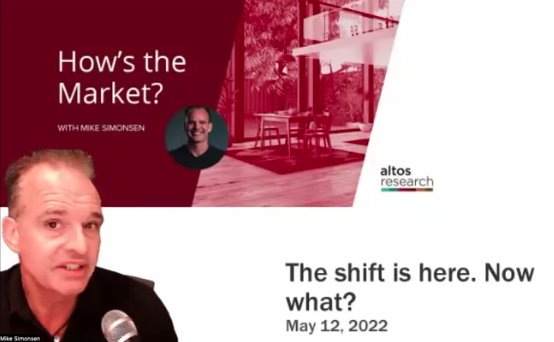If you’re a fan of MLB, the ‘shift’, or having more than two infield players between first and second base, will be on full display this summer, but not indefinitely. It will be banned for the 2023 season.
The reason is a shifting infield gives an unfair advantage to the defensive team, which makes less hits in play, and less scoring in games overall. Not good for score-hungry fans. For a game that is already struggling to hold its base, the upper echelon in the MLB thinks more scoring keeps fans engaged, despite what game managers may want. Rule changes in the National hockey and football leagues in recent years have also occurred to encourage more offense.
The other ‘shift’ you should be paying attention to this summer – both home buyers and sellers, is the one happening in the real estate market. As shared recently by Mike Simonsen – CEO of Altos Research, a leading researcher of real estate market trends and data, there are three main shifts in play today: Inflation, interest rates and inventory.

Inflation & Interest Rates
Job changeover from corporate offices to home-based business during the pandemic in 2020, followed by a flood of stimulus monies into the economy by the Federal government in 2021, has created one of the highest demands in housing, which in turn has created low levels of available inventory. Couple that with current supply chain constraints in energy and other consumer staples in 2022, prices are surging; i.e. inflation.
To curb inflation, the Feds have increased interest rates, and it looks promising they will continue to do so for the foreseeable future. Yet there is still opportunity in buying a home, especially if rates stay below actual inflation, which is trending today at ~5.0% and 7.5% respectively. Thus, a 30-year fixed mortgage below inflation still make today’s market a better buy for homes, despite the higher rates. The question is, for how much longer?
Inventory
At approximately 300,000 homes available nationwide at the time of this report, the above interest rate increase has slowed demand slightly and caused inventory to grow over the past two weeks; 6% and 4.5% respectively. Yet, to be fair, inventory usually goes up in the springtime as sellers get their homes ready for market, but it’s still well below the normal market size of 1 million+ homes available in prior years / decades.
What’s keeping buyers and sellers guessing most is, what is the exact cross-over point, when sellers no longer have an advantage in demand, because inventory allows buyers to have more choice? No one really knows for sure. Homes selling today are being done with less offers overall, and due to higher rates, less amounts over asking price. For the foreseeable future, sellers may be able to bypass the ‘active’ buying market by prepping their home and selling it in 1-2 days. This advantage will of course wane as inventory increases.
Perhaps the best advice is to do what is best for your particular situation, and not try to maximize your opportunity by timing the market, which may be here today, but gone tomorrow.
The shift is on…
